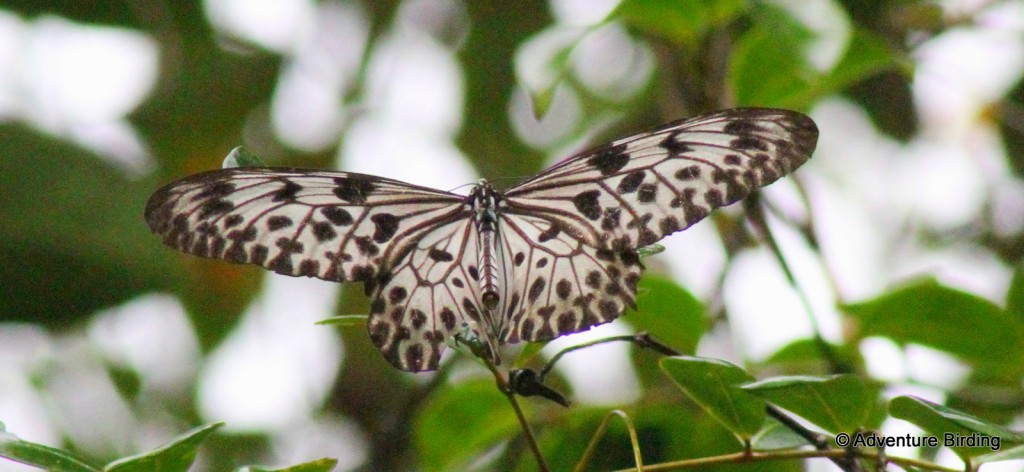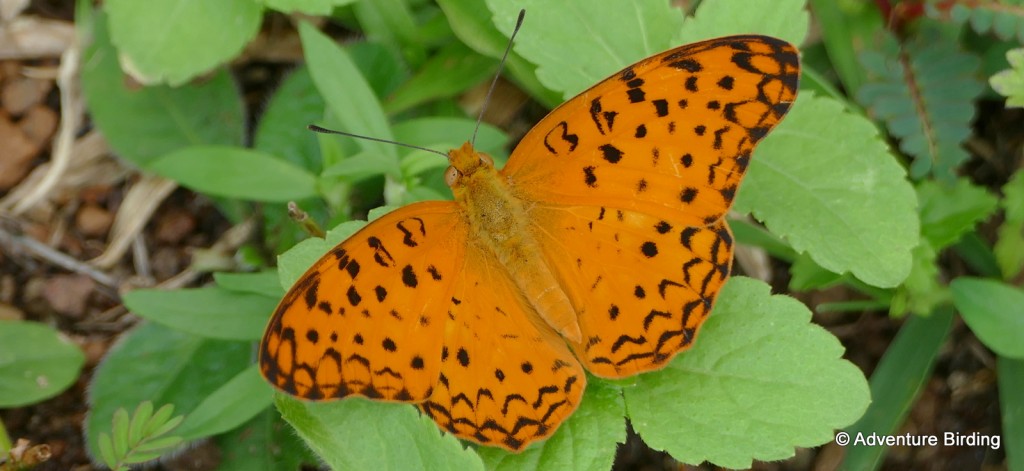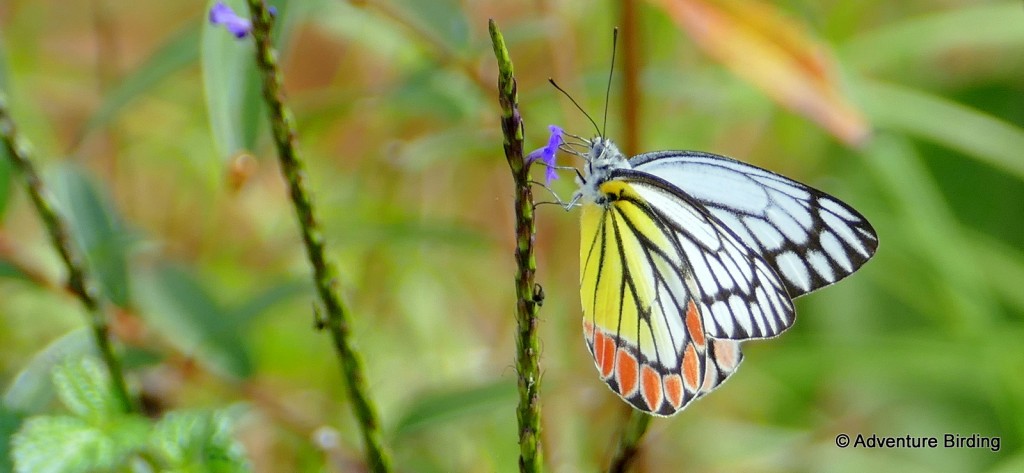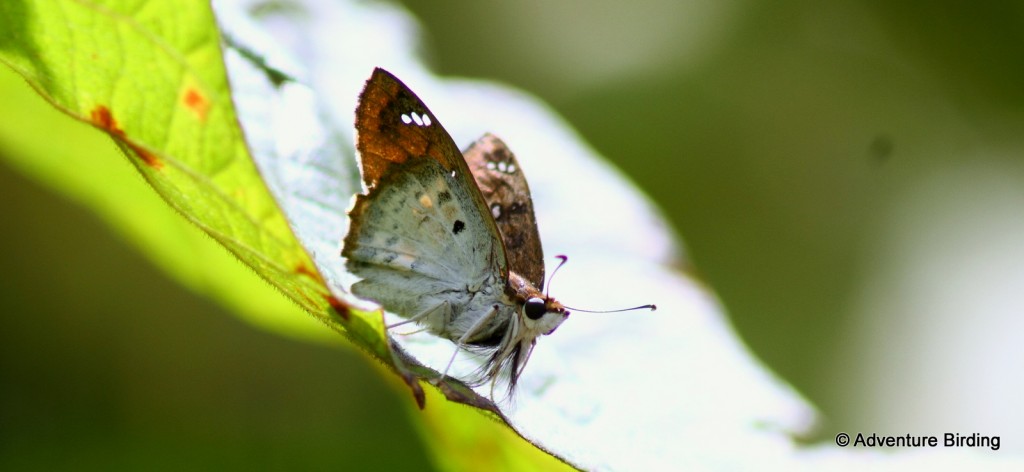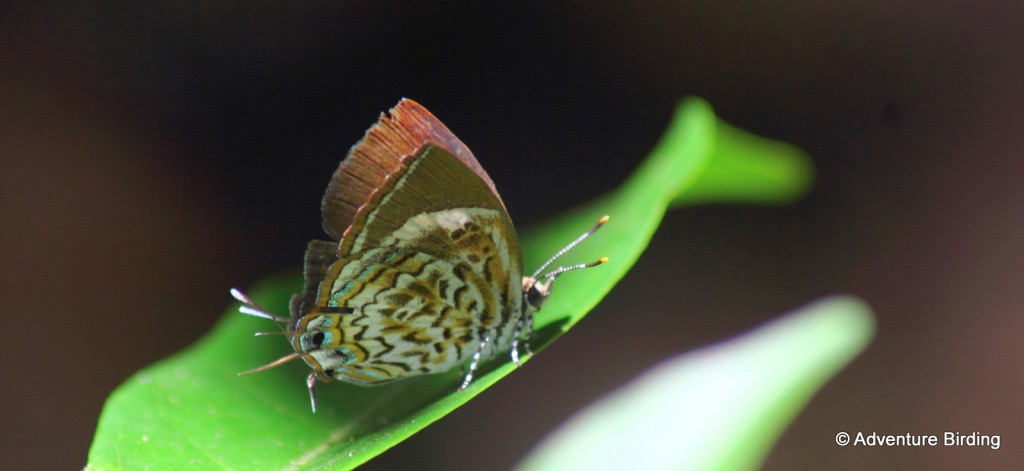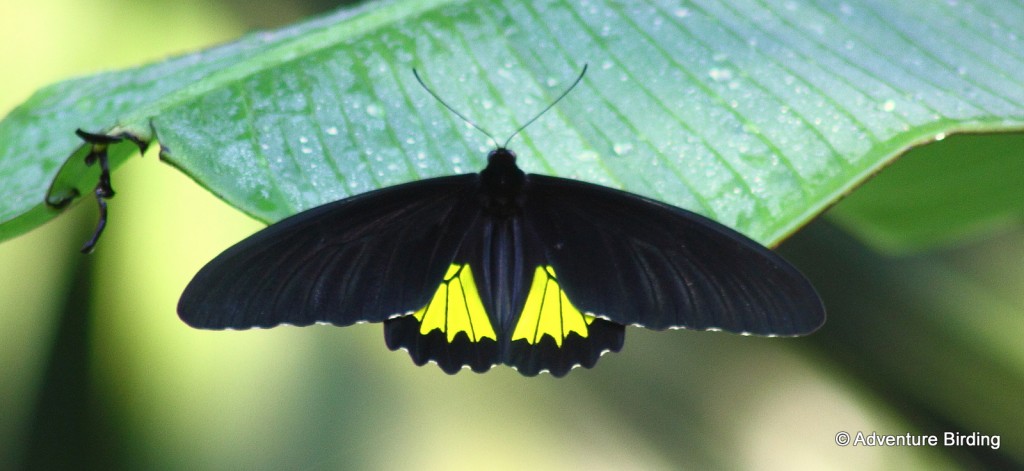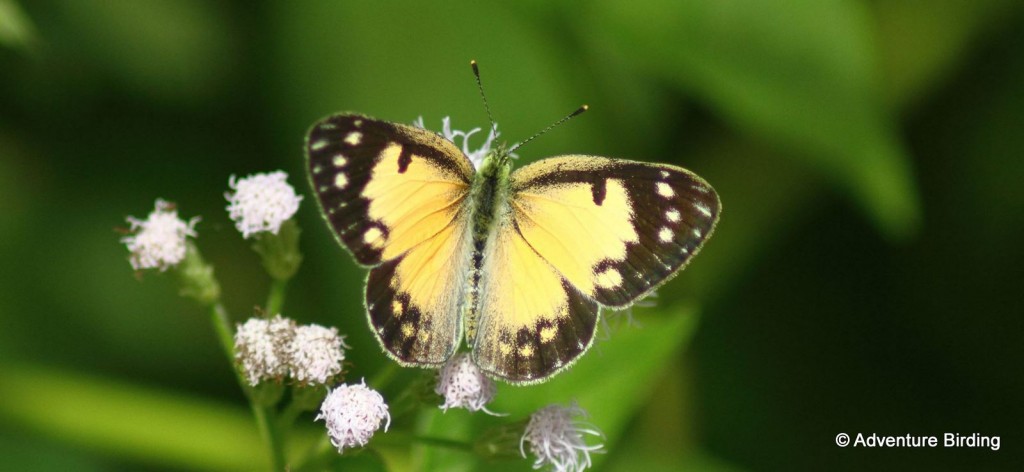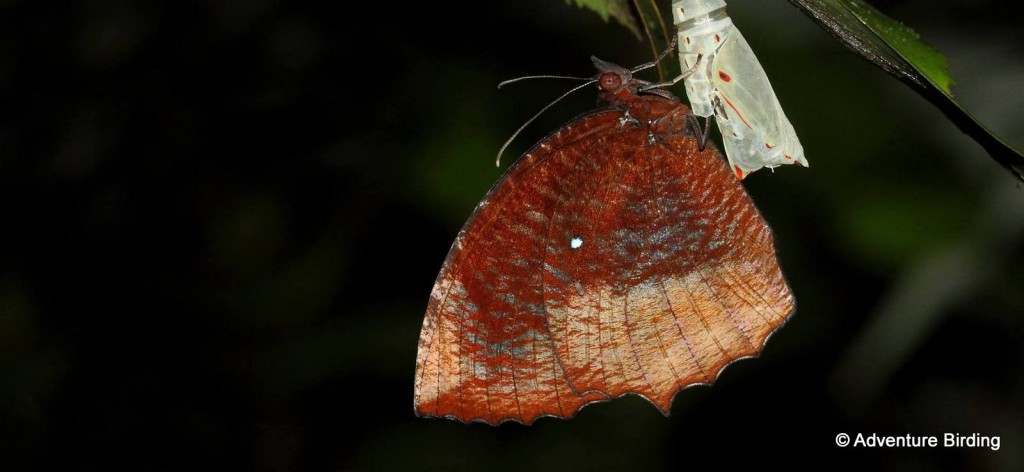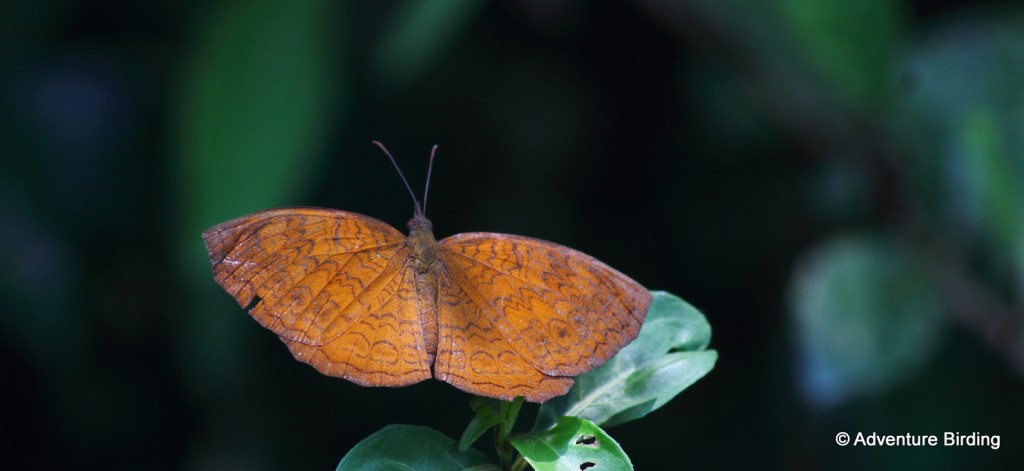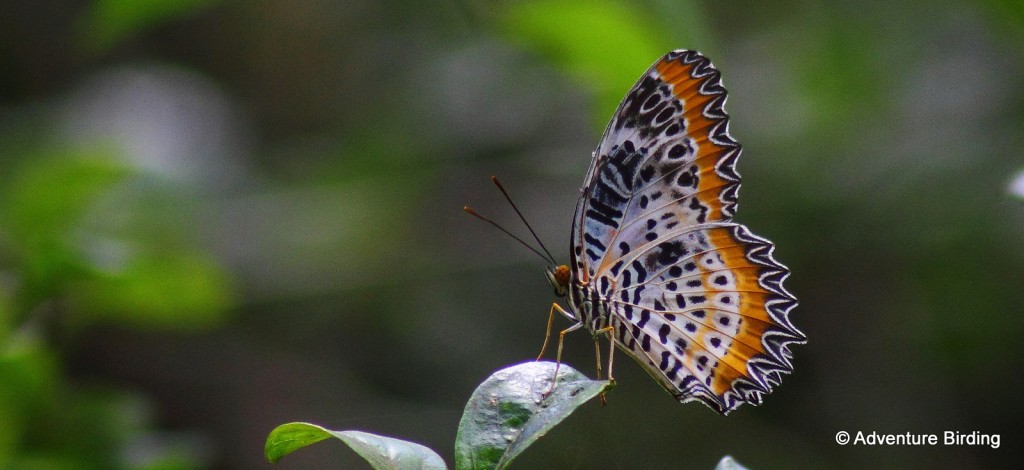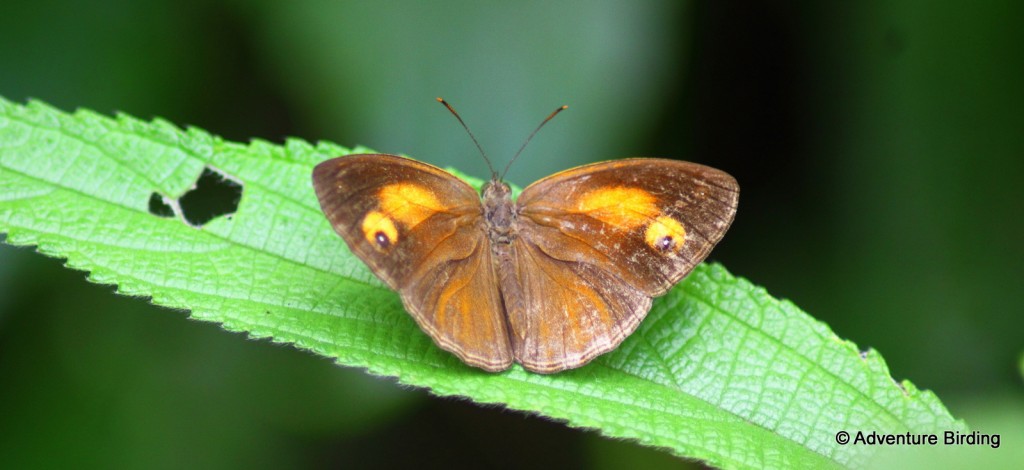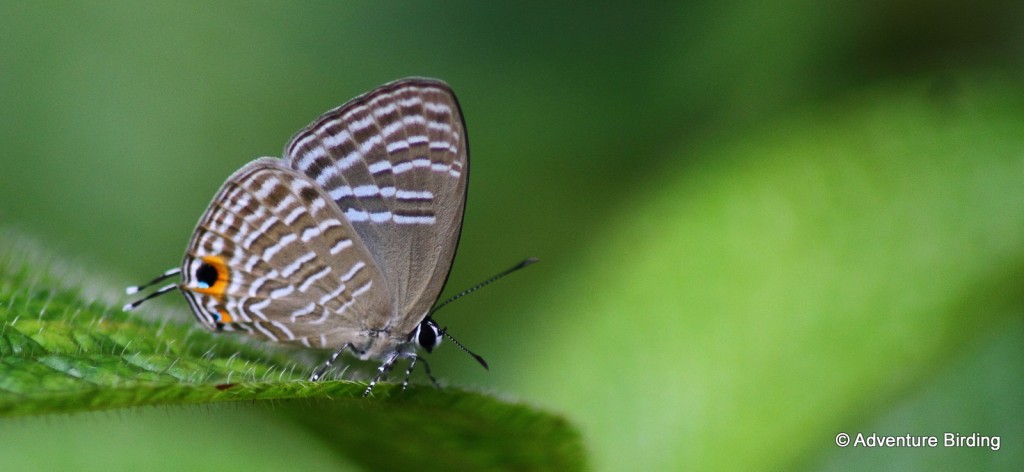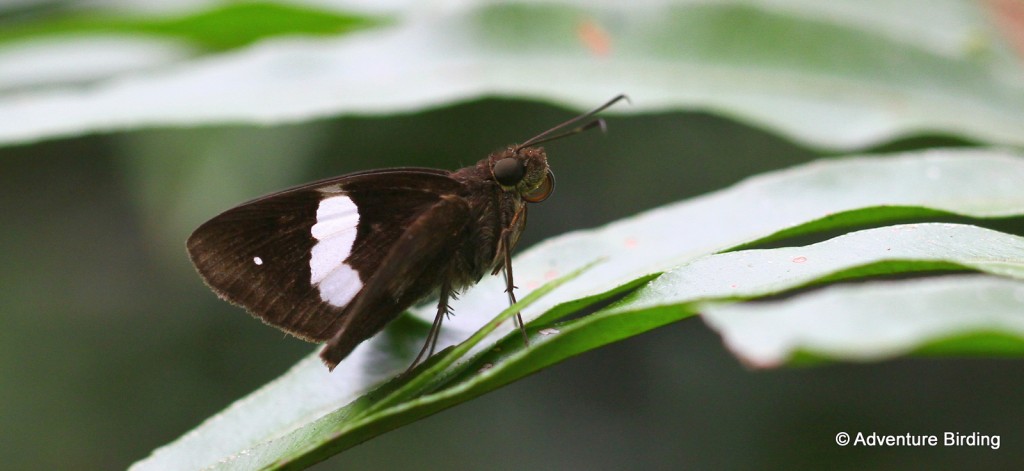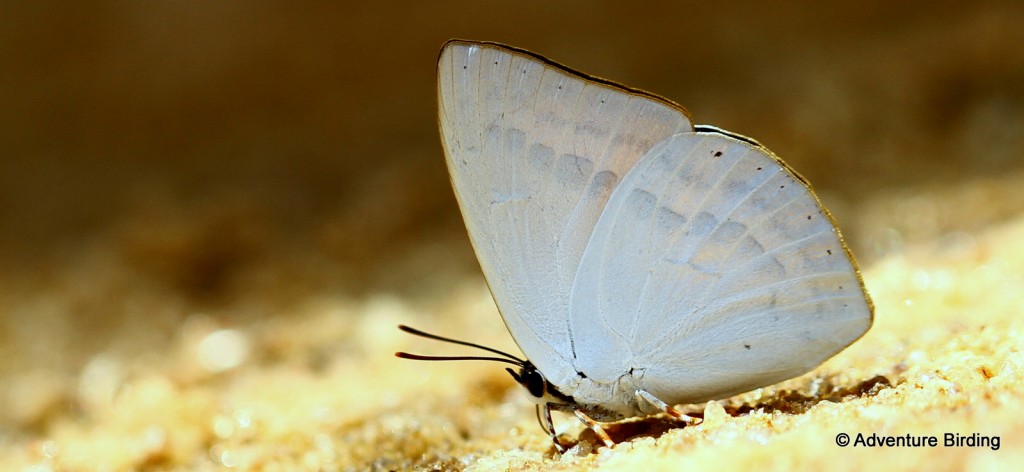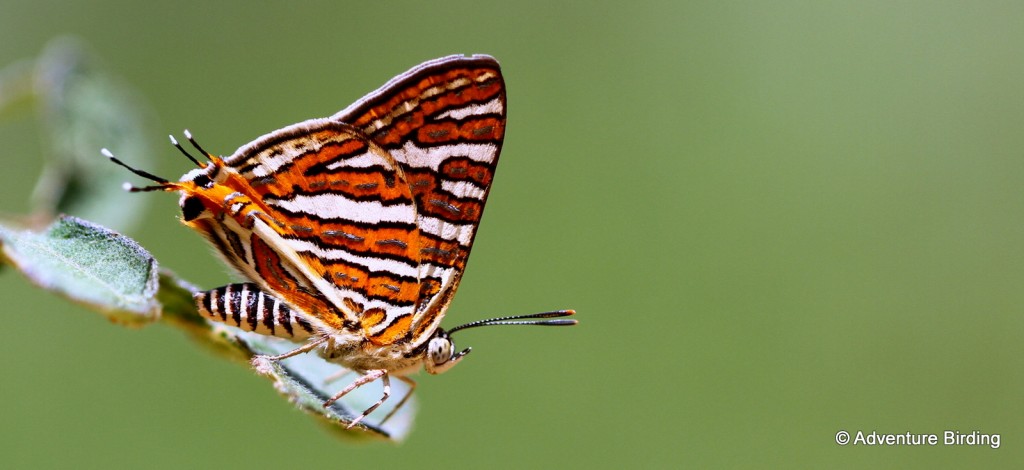Common Banded Peacock (Papilio crino)
The butterfly is solitary It flies in and out of scrub jungles and in wide open spaces, it flies fast and high, and out of reach. It is a nectar lover and prefers the flowers of tall shrubs and small trees but seen flying high above and forages on the trees. It spends little time…
Sri Lankan Tree Nymph (Idea iasonia) (E)
Much of its time is spent hovering or sailing high up in the canopy in a slow motion flight. Although frequently seen very high in the trees, it may be observed at or near ground level during courtship or during its visits to flowers. An endemic butterfly.
Common Pierrot (Castalius rosimon)
It flies relatively fast and low to the ground, and the males frequently settle on roads and gravel patches. It takes nectar from flowers frequently with a choice of wide range of plants with small flowers. When settled once, it moves about a great deal in a slow deliberate manner.
Common Leopard (Phalanta phalantha)
This is a relatively small butterfly, which is rich orange color and accessorized with spots and streaks.
Common Jezebel (Delias eucharis)
Is a medium sized pieridae butterfly found in many areas of Sri Lanka. The Common Jezebel is one of the most common species in the genus Delias.
Angled Pierrot (Caleta decidia)
Fond of jungles and other wooden areas. It is not a keen mud puddler or found in open areas. It tends to fly closer to the ground and settles frequently on damp patches, flowers or bird droppings.
Slate Flash (Rapala manea)
It is a common species, found throughout the island and more common in moderate elevations.The larvae feed on Family Combretaceae and Euphorbiaceae.
Golden Angel (Caprona ransonnettii)
The dry-season form which has been named A. taylorii by de Niceville differs in being ochreous not dark brown above, and in having the disc of the hindwing unmarked with a group of ochreous spots and streaks.
Monkey Puzzle (Rathinda amor)
This butterfly is found in jungle areas of moderate to heavy rainfall, in heavy forest and scrub but prefer to keep to undergrowth and can be seen along open areas such as forest paths and in clearings.
Great Eggfly (Hypolimnas bolina)
It is especially active in the rain and frequently visit flowers for nectar. Though it appears to be docile because of its shape and size, particularly when nectaring, it is seen beating a hasty retreat when disturbed.
Purple Leaf Blue (Amblypodia anita)
Sri Lankan Birdwing (Troides darsius) (E)
It is the national and the largest butterfly in Sri Lanka. Male flies swiftly and usually at a height, but comes down to nectar on flowers. The female, though not as swift tends to stay even higher and is therefore more evasive.
Small Salmon Arab (Colotis amata)
It is commonest in the two arid zones along the South East and North West coast of the island found in the hottest and driest parts of the low country.
Common Palmfly (Elymnias hypermnestra)
It also has some unique habits such as, being nosy and inquisitive. It regularly or at times annoyingly intercepts other butterflies when they trespass their territory.
Commander (Moduza procris)
It can only readily be seen if brought to bait, of which it appears inordinately fond. It is often found settled on the ground gently flapping its wings.
Common Tiger (Danaus genutia)
The Common Tiger (Danaus genutia) is one of the common butterflies of Sri Lanka. It belongs to the “Crows and Tigers”, that is, the danainae group of the Brush-footed butterflies family.
Angled Castor (Ariadne Ariadne)
Ariadne ariadne, also known as the Angled Castor, is a species of nymphalid butterfly found in Sri Lanka.
Grizzles Skipper (Spialia galba)
It is a fast flying hesperiid butterfly which is found in South east Asia. Found throughout the island, it prefers to flying among herbs in sunny conditions.
Sri Lankan One-Spot Grass Yellow (Eurema ormistoni) (E)
An endemic bright yellow butterfly. There are few markings on the underside. It differs from the other Grass Yellows by curved tornus of the fore wing. It gives a rounder appearance.
Common Castor (Ariadne merione)
It spends most of its time around its host plant and tends to perch often, when disturbed it circles the area and return to its original perch.
Lace Wing (Cethosia nietneri)
The butterfly has a slow and labored flight when it flies low but takes on a regal float when it flies at a height. It usually flies in a straight line about ten to fifteen feet above ground. It moves forward with a continuous, slow, and labored flapping of its wings; it rarely glides.
Grass Jewel (Freyeria putli)
It is the smallest butterfly species in Sri Lanka. It is purplish brown on the upper side. There are marked indistinct tornal spots.
Gladeye Bushbrown (Mycalesis patnia)
Forewing under side have a distinct large ‘eye spot’ with a pale yellow outer ring. Mostly prefer road side vegetation.
Metallic Cerulean (Jamides alecto)
It is known to be a cardamom pest. When encountered, it is usually in the company of others of its kind.
Great Crow or King Crow (Euploea phaenareta)
Dark brown wings and distinctly larger in size. Compared with the other Crow’s the sub marginal spots on the hind wing are smaller. Prefer gloomy habitats.
Common Banded Demon (Notocrypta paralysos)
The median band on the underside forewing continues up to the upper margin. But on the upper side the band stops at half way at the upper margin.
Painted Sawtooth (Prioneris sita)
Very similar to the Common Jezebel, but the orange patches in the hind wing outer margin are rectangular. Patches at fore wing apex are occasionally yellow. Males do mud sipping.
Blue Mormon (Papilio polymnestor)
The second largest butterfly in the country. Male is with brighter blue colour on upper side than in female. Very fond of feeding on nectar of Clerodendrum. Fast flier and often settle on the ground for mud sipping.
Common Sailor (Neptis hylas)
Out of the two Neptis’ found in the country, this is the common one found throughout the country. Three distinct parallel bands on the upper side help to differentiate from Neptis jumbah.
Sri Lankan Hedge Hopper (Baracus vittatus) (E)
Usually found in the hill country and from the lowlands. An endemic butterfly under the Hesperiidae family. Yellowish brown back ground on underside wings with a pale yellow line on the hind wing underside.
Sri Lankan Lesser Albatross (Appias galena) (E)
An endemic butterfly from the Pieridae family. Concaved outer margin of the fore wing, and more curved anal angle than the Common Albatross. Do migratory flights as groups within the country.
Indian Sunbeam (Curetis thetis)
Snow white underside with occasional obscure markings. Male with shiny orange – red on the upper side. Female with thick black marginal bands with white area on the upper sides.
Pea Blue (Lampides boeticus)
It is found in all elevations in open areas of Sri Lanka, throughout the year. It is commonest places with overgrown vegetation.
Common Cerulean (Jamides celeno)
Found throughout the country. Sub marginal rows consist of streaks on both wings. Paired lines on fore wing are almost straight and continuous. Never settle with open wing even for basking. Tiny tails and tornal spots act as a false head to protect from the predators.
Common Silverline (Spindasis vulcanus Fabricius)
It is very easily distinguishable from its similar species simply because it is the smallest. The upper surface on the underside hind wing, the central band is more separated from the outer band than in any other species. The upper side of the fore wing has bands which are reddish orange.
The Chocolate Pansy or Chocolate Soldier (Junonia iphita)
The Chocolate Pansy is a butterfly found in Sri Lanka. Individuals maintain a territory and are usually found close to the ground level and often bask in the sun.


